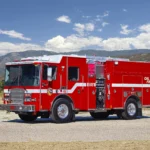
Astronauts are among the bravest and most capable people on the world. By travelling into space, performing experiments, and working on the International Space Station, they have pushed the bounds of human knowledge and discovery (ISS). Astronauts risk their lives on each mission to enhance our understanding of the cosmos and inspire future generations to aim for the stars. Here are some fascinating facts about astronauts that you may not be aware of.
The average age of an astronaut candidate is 34 years old. This is because the selection process for becoming an astronaut is quite rigorous, requiring a significant amount of education, training, and experience. Most candidates have completed advanced degrees in science, technology, engineering, or math, and have also gained relevant work experience in fields such as research, engineering, or piloting. In addition, candidates must meet strict physical requirements, such as being in excellent health and having 20/20 vision or corrective surgery. All of these factors contribute to the selection of candidates who are typically in their early to mid-30s.
To become an astronaut, candidates must have at least a bachelor’s degree in a science, technology, engineering, or math field. This is because these fields are highly relevant to the work of astronauts, who must be knowledgeable in areas such as physics, mechanics, and computer science. In addition, the rigorous training required to become an astronaut requires a strong foundation in these subjects. Many astronaut candidates also have advanced degrees, such as master’s or doctorate degrees, in these fields, which further enhances their knowledge and expertise.
The first human in space was Yuri Gagarin, a Soviet Air Force pilot who made history on April 12, 1961, when he orbited Earth aboard the Vostok 1 spacecraft. Gagarin’s flight lasted just 108 minutes, but it paved the way for the Soviet Union’s early lead in the space race.
John Glenn became the first American to orbit Earth on February 20, 1962, aboard the Friendship 7 spacecraft. Glenn’s mission lasted nearly five hours, during which he circled the globe three times. Glenn later became a U.S. Senator, and in 1998, at the age of 77, he became the oldest person to fly in space.
Valentina Tereshkova, a Soviet cosmonaut and former textile factory worker, became the first woman in space on June 16, 1963, when she orbited Earth aboard the Vostok 6 spacecraft. Tereshkova’s flight lasted just under three days, during which she conducted experiments and monitored her spacecraft’s systems.
On July 20, 1969, Neil Armstrong became the first person to walk on the Moon during the Apollo 11 mission. Armstrong famously declared, “That’s one small step for man, one giant leap for mankind,” as he took his first steps on the lunar surface. Armstrong was joined by fellow astronaut Edwin “Buzz” Aldrin, while Michael Collins orbited above in the Apollo 11 command module.
Gherman Titov, a Soviet cosmonaut, became the youngest person to fly in space when he orbited Earth on August 6, 1961, at the age of 25. During his 25-hour mission, Titov conducted scientific experiments and became the first person to experience the effects of space sickness.
John Glenn holds the record for being the oldest person to fly in space. Glenn returned to space on October 29, 1998, at the age of 77, as part of the STS-95 mission aboard the Space Shuttle Discovery. His second trip to space helped researchers study the effects of spaceflight on older individuals.
Valeri Polyakov, a Russian cosmonaut, holds the record for the longest single spaceflight by a human. Polyakov spent 437 days in space from January 1994 to March 1995 aboard the Russian space station Mir. During his mission, he conducted experiments on the effects of long-duration spaceflight on the human body.
The International Space Station (ISS) orbits Earth at an altitude of approximately 408 kilometers (253 miles). The ISS is a joint project of several space agencies, including NASA, Roscosmos, the European Space Agency, and the Japanese Aerospace Exploration Agency. The station’s primary purpose is to serve as a research laboratory in low Earth orbit.
The ISS has been continuously inhabited by humans since November 2, 2000, when the first long-duration crew arrived on the station. Since then, more than 240 people from 19 countries have visited the ISS. The station is currently staffed by a crew of six astronauts who conduct scientific experiments, perform maintenance tasks, and support spacewalks.
The ISS travels at a speed of approximately 28,000 kilometers per hour (17,500 miles per hour), completing one orbit of Earth every 90 minutes. This high speed is necessary to maintain the station’s orbit in the vacuum of space, where there is no air resistance to slow it down.
Kathryn Sullivan, an American astronaut, became the first American woman to walk in space on October 11, 1984, during the STS-41G mission aboard the Space Shuttle Challenger. Sullivan spent more than three hours outside the spacecraft, performing a variety of tasks, including retrieving a satellite for repair.
Guion Bluford, an American astronaut, became the first African American in space when he flew aboard the Space Shuttle Challenger on August 30, 1983, as part of the STS-8 mission. Bluford went on to fly three more space shuttle missions during his career.
Dennis Tito, an American businessman, became the first private citizen to travel to space on April 28, 2001, aboard a Russian Soyuz spacecraft. Tito, a former NASA scientist, paid $20 million to the Russian space agency for the privilege of spending eight days aboard the International Space Station (ISS). Despite initial opposition from NASA and the Russian space agency, Tito’s mission paved the way for space tourism, with several other private citizens later following in his footsteps. Tito’s spaceflight also sparked a renewed interest in space exploration and inspired others to pursue their dreams of traveling to the final frontier.
Franklin Chang-Diaz, a Costa Rican-American astronaut, became the first Hispanic person in space when he flew aboard the Space Shuttle Columbia on January 12, 1986, as part of the STS-61C mission. Chang-Diaz went on to fly six more space shuttle missions and helped develop new technologies for space propulsion.
Marc Garneau, a Canadian astronaut, became the first Canadian in space when he flew aboard the Space Shuttle Challenger on October 5, 1984, as part of the STS-41G mission. Garneau went on to fly two more space shuttle missions and became the president of the Canadian Space Agency in 2001.
Ilan Ramon, an Israeli astronaut, became the first Israeli in space when he flew aboard the Space Shuttle Columbia on January 16, 2003, as part of the STS-107 mission. Ramon and his crewmates tragically lost their lives when the shuttle broke apart during re-entry on February 1, 2003.
Peggy Whitson, an American astronaut, holds the record for the most cumulative time spent in space by an American astronaut, with a total of 665 days over three missions. Whitson also became the first woman to command the ISS and performed multiple spacewalks during her career.
Scott Kelly and his twin brother Mark Kelly, both American astronauts, participated in the NASA Twins Study in 2015-2016. Scott spent 340 days aboard the ISS, while Mark remained on Earth. The study aimed to investigate the effects of long-duration spaceflight on the human body, using the twins as a comparison.
Sally Ride, an American astronaut, became the first American woman to fly in space on June 18, 1983, aboard the Space Shuttle Challenger. Ride went on to fly on a second space shuttle mission and later worked as a professor of physics at the University of California, San Diego.
The first animal to orbit Earth was a dog named Laika, who flew aboard the Soviet Union’s Sputnik 2 spacecraft on November 3, 1957. Unfortunately, Laika did not survive the mission due to overheating caused by a malfunctioning thermal control system.
Yuri Gagarin, the first human in space, was not the first choice for the mission. The Soviet authorities considered several other cosmonauts for the historic flight, but ultimately selected Gagarin due to his performance in training and his relatively short stature, which allowed him to fit in the spacecraft’s small capsule.
Christina Koch, an American astronaut, set a record for the longest single spaceflight by a woman when she spent 328 days aboard the ISS from 2019-2020. Koch conducted several experiments during her mission and participated in the first all-female spacewalk with fellow astronaut Jessica Meir.
Michael Collins, an American astronaut, played a crucial role in the Apollo 11 mission as the pilot of the command module Columbia. While Neil Armstrong and Buzz Aldrin walked on the Moon, Collins orbited above, maintaining communication with mission control and ensuring a safe return to Earth for the crew.
Astronaut FAQs: So You Want to Touch the Stars?
Becoming an Astronaut
- What does it take to become an astronaut? The road to becoming an astronaut is rigorous. Typically, aspiring astronauts need a master’s degree in a relevant field like science, engineering, or mathematics, and several years of relevant experience (often in research or military test piloting). Physical fitness is paramount, with demanding physical assessments to ensure astronauts can handle the G-forces of launch and the rigors of spaceflight.
- How do I apply to become an astronaut? Many space agencies, like NASA, periodically open application periods for their Astronaut Candidate Program. These applications can be found on the agency’s website and typically involve a multi-stage selection process including written tests, interviews, and medical evaluations.
- Is there an age or citizenship requirement? Age requirements can vary by space agency, but most fall within the range of 27 to 35 years old. Citizenship requirements depend on the specific program. Some programs recruit solely from their own citizens for national security reasons, while others are open to international cooperation.
Training for Space
- What kind of training do astronauts undergo? Selected astronaut candidates embark on a challenging and comprehensive training program that can last for two years or more. This training includes:
- Scientific and technical training: Astronauts gain in-depth knowledge about spacecraft systems, space science, orbital mechanics, and how to conduct experiments in microgravity.
- Physiological training: Astronauts undergo rigorous physical conditioning to maintain peak fitness for launch, spaceflight, and spacewalks. This includes cardiovascular exercise, strength training, and experiencing the effects of high-altitude and centrifuge training to simulate G-forces.
- Survival training: Astronauts learn wilderness survival skills in case of an emergency landing or water landing scenario.
- Teamwork and leadership training: Astronauts learn to function effectively as a team member in a high-pressure environment with diverse personalities and backgrounds.
- Do astronauts learn Russian? For missions to the International Space Station (ISS), astronauts from non-Russian space agencies are often required to learn Russian to communicate effectively with their Russian counterparts and operate Russian-built equipment on the station.
Life in Space
- What is it like to live and work in space? Living in space is an extraordinary experience, but it’s also challenging. Astronauts have to adapt to microgravity, which can cause muscle loss, bone density loss, and fluid shift. Daily tasks like eating, sleeping, and hygiene require special adaptations in a weightless environment. Astronauts also work long hours conducting scientific research, maintaining the spacecraft, and communicating with mission control.
- How do astronauts eat in space? Space food has come a long way! Astronauts have a variety of pre-packaged meals they can rehydrate with water or heat. These meals are designed to be nutritious and meet specific dietary needs. Fresh fruits and vegetables are sometimes available on missions with short durations.
- How do astronauts sleep in space? Astronauts sleep in specially designed sleeping bags that keep them from floating around. Sleep can be disrupted by microgravity and the confined environment, so maintaining a sleep schedule is important for crew health and well-being.
- Do astronauts go for spacewalks? Spacewalks, or Extravehicular Activities (EVAs), are conducted when astronauts need to perform maintenance or scientific experiments outside the spacecraft. Astronauts wear pressurized spacesuits that provide oxygen and regulate temperature during these excursions. Spacewalks are complex and risky, requiring meticulous planning and extensive training.
The Future of Astronauts
- Where will astronauts travel to in the future? Space agencies around the world are working on ambitious missions to send astronauts back to the Moon, with a long-term goal of crewed missions to Mars. Astronauts will play a vital role in establishing a human presence on the Moon and potentially Mars, conducting scientific research and laying the groundwork for future exploration and habitation.
- What are the challenges of long-duration space travel? The harsh environment of space poses several challenges for long-duration missions. Exposure to radiation, the psychological effects of isolation and confinement, and the physiological challenges of microgravity all need to be addressed as space agencies plan for deeper exploration of our solar system.
These are just a few of the many questions people have about astronauts. Space exploration is a fascinating field, and astronauts are the brave pioneers who push the boundaries of human knowledge and experience.









